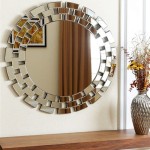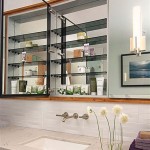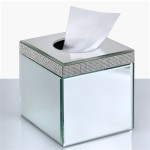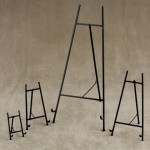Hanging a Heavy Mirror on Plasterboard: A Comprehensive Guide
Securing a heavy mirror to plasterboard walls requires careful planning and execution. Plasterboard, also known as drywall, is a relatively weak material compared to solid brick or concrete and necessitates the use of appropriate fixings and techniques to prevent the mirror from falling and causing damage or injury. This article provides a detailed guide to the considerations and procedures involved in safely hanging a heavy mirror on plasterboard.
Understanding Plasterboard and its Limitations
Plasterboard typically consists of a gypsum core sandwiched between two layers of paper facing. Its ease of installation and affordability make it a common wall covering in residential and commercial buildings. However, its inherent fragility presents challenges when hanging heavy objects. The weight-bearing capacity of plasterboard is significantly lower than that of solid walls. Directly screwing into plasterboard without adequate support risks the screws pulling out over time, especially under the sustained weight of a heavy mirror. Therefore, understanding the limitations of plasterboard is the first step in ensuring a successful installation.
The thickness of the plasterboard itself influences its load-bearing capacity. Standard plasterboard is generally 12.5mm (½ inch) thick, but thinner versions are sometimes used. Thicker plasterboard, up to 15mm, offers slightly improved weight-bearing capabilities. Identifying the plasterboard thickness can help determine the appropriate type of fixings to use. Moreover, the presence of a cavity behind the plasterboard is a crucial factor. This cavity is common in stud walls, where vertical wooden or metal studs provide structural support. Finding and utilizing these studs is often the most secure method for hanging heavy items.
Another important aspect to consider is the condition of the plasterboard. Plasterboard can become weakened by moisture damage, impact damage, or previous unsuccessful attempts at hanging objects. If the plasterboard is damaged, it may be necessary to repair or replace the affected section before attempting to hang the mirror. Failing to address pre-existing damage can compromise the integrity of the fixing and lead to a failure of the installation.
Choosing the Right Fixings and Tools
Selecting the correct fixings is paramount for safely hanging a heavy mirror on plasterboard. Several types of fixings are available, each designed for different weight capacities and plasterboard thicknesses. The choice depends on the weight of the mirror and the availability of wall studs.
Stud Finder: A stud finder is an essential tool for locating the wooden or metal studs behind the plasterboard. These studs provide a solid anchor point for screws and can support significantly more weight than the plasterboard alone. Stud finders use either magnetic or electronic sensors to detect the studs. Electronic stud finders are generally more accurate, but magnetic stud finders can be effective in locating metal studs or screws already present in the wall.
Screws: If a stud is located, use long screws that can penetrate deeply into the wood or metal. Drywall screws are designed to self-tap into the stud and provide a secure hold. The length of the screw should be sufficient to pass through the plasterboard and penetrate at least half the thickness of the stud. Using too short a screw will reduce the holding power.
Plasterboard Fixings: When studs are not available, various plasterboard fixings can be used. These fixings are designed to expand or grip the plasterboard from behind, providing a more secure anchor point than screwing directly into the plasterboard. Common types include:
- Hollow Wall Anchors (Toggler Bolts): These anchors consist of a metal bolt and a spring-loaded wing that opens behind the plasterboard. They offer excellent holding power and can support relatively heavy loads. To install, a hole is drilled through the plasterboard, the anchor is inserted, and the bolt is tightened, causing the wing to expand and grip the back of the wall.
- Self-Drilling Plasterboard Anchors: These anchors are designed to screw directly into the plasterboard without pre-drilling a hole. They typically have a wide thread that provides a good grip. However, their weight-bearing capacity is generally lower than that of hollow wall anchors.
- Expanding Plasterboard Anchors (Wall Plugs): These anchors are inserted into a pre-drilled hole, and a screw is then inserted into the anchor. As the screw is tightened, the anchor expands, gripping the plasterboard. The weight-bearing capacity varies depending on the size and type of anchor.
- Heavy Duty Plasterboard Anchors: These are more robust versions of standard plasterboard anchors, designed to hold heavier loads. They often feature a larger gripping surface and a more durable construction.
The weight rating of each fixing should be carefully considered. Always choose fixings that are rated to support the weight of the mirror, plus a safety margin. It's better to overestimate the weight capacity than to underestimate it. Additionally, using multiple fixings can distribute the weight more evenly and increase the overall stability of the installation.
Other Essential Tools: In addition to fixings and a stud finder, the following tools are necessary for hanging a heavy mirror:
- Drill: A drill is needed for pre-drilling pilot holes and installing certain types of fixings.
- Screwdriver: A screwdriver is used to tighten screws and bolts.
- Measuring Tape: A measuring tape is essential for accurately positioning the mirror and marking the locations for the fixings.
- Level: A level is crucial for ensuring that the mirror is hung straight.
- Pencil: A pencil is used for marking the wall and indicating the locations for drilling.
- Safety Glasses: Safety glasses should be worn to protect the eyes from dust and debris during drilling.
Step-by-Step Installation Process
The installation process involves careful planning and execution to ensure the mirror is securely and safely hung.
1. Planning and Preparation: Begin by determining the desired location for the mirror. Use a measuring tape and level to mark the exact position on the wall. Consider the height and alignment of the mirror in relation to other objects in the room. Before drilling, check for any hidden cables or pipes in the wall using a cable and pipe detector. This is crucial to avoid damaging electrical wiring or plumbing.
2. Locating Studs: Use a stud finder to locate the wall studs near the marked location. Move the stud finder slowly across the wall until it detects the edge of a stud. Mark the location of the stud with a pencil. Repeat this process to find the other edge of the stud. This will help determine the width of the stud. If studs are available, use screws to attach the mirror hanging hardware directly to the studs.
3. Drilling Pilot Holes (If Necessary): If using plasterboard fixings, pre-drill pilot holes according to the manufacturer's instructions. The size of the pilot hole should match the size of the fixing. Drilling a pilot hole helps to prevent the plasterboard from cracking or crumbling when the fixing is inserted. Be careful not to drill too deep, especially if using hollow wall anchors, as this can damage the wings behind the plasterboard.
4. Installing the Fixings: Insert the chosen fixings into the pre-drilled holes or directly into the plasterboard if using self-drilling anchors. Follow the manufacturer's instructions carefully. For hollow wall anchors, insert the anchor into the hole and tighten the bolt until the wing expands behind the plasterboard. For self-drilling anchors, screw the anchor directly into the plasterboard until it is flush with the wall. For expanding plasterboard anchors, insert the anchor into the hole and then insert the screw, tightening it until the anchor expands.
5. Attaching the Mirror Hanging Hardware: Once the fixings are securely in place, attach the mirror hanging hardware to the fixings. This may involve screwing brackets or hooks onto the fixings. Ensure that the hardware is securely attached and that it is capable of supporting the weight of the mirror. Double-check that the hardware is aligned correctly and that it is level.
6. Hanging the Mirror: Carefully lift the mirror and hang it onto the installed hardware. Ensure that the mirror is securely resting on the hardware and that it is not wobbling or tilting. If necessary, adjust the position of the mirror to ensure that it is level and aligned correctly. Avoid sudden movements or excessive force when hanging the mirror.
7. Testing the Installation: Once the mirror is hung, gently test the installation by applying slight pressure to the mirror. Ensure that the fixings are holding securely and that the mirror is not moving or shifting. If any movement is detected, re-tighten the fixings or consider using additional fixings to provide more support.
8. Final Adjustments: Make any final adjustments to the position of the mirror to ensure that it is perfectly aligned and level. Clean the mirror surface to remove any fingerprints or smudges. Step back and admire the finished result.
By carefully considering the limitations of plasterboard, choosing the right fixings and tools, and following the installation process meticulously, the process of hanging a heavy mirror on plasterboard can be achieved. Always prioritize safety and use appropriate precautions to prevent accidents and ensure the long-term stability of the installation.

How To Hang A Heavy Mirror On Plasterboard Timber Framed Wall

Hanging Heavy Mirror On Plaster Walls 6 Steps With Pictures Instructables
How Heavy Of A Mirror Can You Hang In Drywall Quora

How To Hang A Very Heavy Picture Or Mirror The Best

How To Hang A Large Or Heavy Mirror

Hang A Mirror On Plasterboard Wall Soraya Interiors

Gripit Review How To Hang A Heavy Picture On Plasterboard Wall 2

How To Hang A Mirror On Plasterboard Wall Soraya Interiors

How To Hang A Heavy Mirror With Pictures Wikihow

How To Hang A Very Heavy Picture Or Mirror The Best








